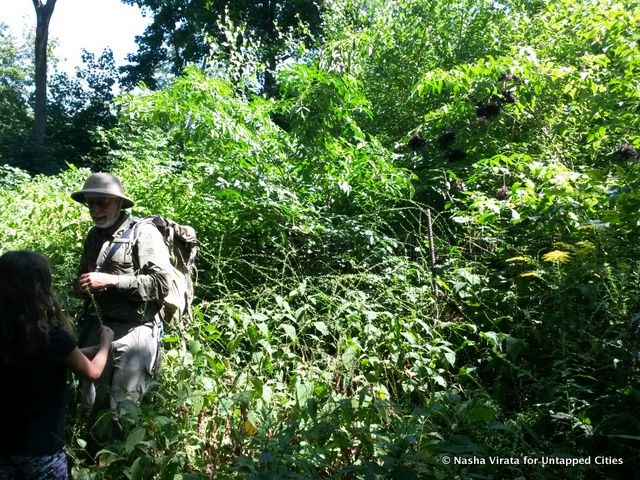NYC’s Forgotten ‘War on Christmas Trees’
Discover how an obscure holiday crackdown affects festive street vendors today!


The United Nations predicts that by 2015, 88.3% of the population of the United States will live in urban areas. And we’ll still need our greens. New Yorkers have been getting creative with ways to bring locally-produced food in the most sustainable ways they can come up with. Chances are, someone is growing dinner within a mile as you read this. Here are 6 sustainable urban agriculture spots in NYC:
The newly converted Pfizer Building of Brooklyn welcomes aquaponics.
Christopher Taurasi leads VertiCulture,project to raise fish and plants in a technology-aided symbiotic environment. In short, the system has plants use fish waste as fertilizer (that would otherwise hurt the fish) while fish are in turn eating plant waste. VertiCulture’s goal is not only to have the tilapia sold fresh and locally but to also have their sustainable system used in any urban setting.
With the goal of supporting the local economy, Brooklyn Grange’s 2.5 acres of rooftop farm with locations in Brooklyn and Queens produces 50,000 pounds of vegetables a year. They were founded through a CSA, but today offer school programs, yoga classes, and catered weddings. Plus, they have the city’s largest apiary hosting this week’s Honey Themed Dinner in honor of NYC Honey Week.
For more of the city’s rooftop farms, try
7 of NYC’s Rooftop Farms: Brooklyn Grange, Eagle Street Farm, Riverpark Farm, Gotham Greens.
The Queens Apiary, recently moved to Long Island, shows promise among other, more established urban apiaries such as Brooklyn Grange. Their inspiring Manifesto proclaims no GMOs, no waste, and improved treatment of the bees themselves. After all, proprietor Kazumi Terada says, “what’s good for bees is good for people.”
At the Waldorf Astoria? Yup. The roof of the legendary NYC hotel has been taken over by bees. The Waldorf Astoria‘s rooftop apiary produces hundreds of pounds of honey a year to sweeten the kitchen directly below. With help from the greenery of Central Park nearby and served in the on-site restaurant, this honey is definitely local.
A little less popular and a bit less legal are “Wildman” Steve Brill‘s
foraging tours of New York parks. With the purpose of promoting urban agriculture and sustainable eating, our “Wildman” gives tours of what to pick and how to eat it or use it in a recipe. His focus on sustainable ingredient choices (i.e. only picking renewable and regenerating plants) has not gone unnoticed by NYC chefs. New York laws forbidding foraging are vague, since “Wildman” Brill has maintained amicable relationships with park rangers since the 1980’s.If you’re interested in a full recount of our experience on one of “Wildman’s” tours, check out Food Foraging Tours with the “Wildman” Steve Brill in Prospect Park Brooklyn
Sweet basil, thai basil, cilantro, rosemary, fennel, swiss chard grown in shipping containers in Red Hook? This urban farm consists of two shipping containers with LED lights. Still new to the urban-farming scene, SpringUps will be providing locally-grown pesticide-free produce all year round using hydroponic growing systems. This means that no soil is used and all water is recirculated, wasting nothing. Here are some numbers from SpringUps:
– 10 containers is the equivalent of one acre of farmland
– Ten containers use 36,400 gallons of water annually, compared to 1.9 million gallons for one acre of traditional farmland
– Container farms only require 25% of the energy that a typical greenhouse uses
– Produce travels on average between 1,500-2,500 miles; less food miles means less fuel consumption and air pollution
Sustainable? Yes. Urban? Yes. Insanely innovative and exciting? Yes!
For a step back in time, here’s our Map of Farms on Manhattan back in the day
Subscribe to our newsletter